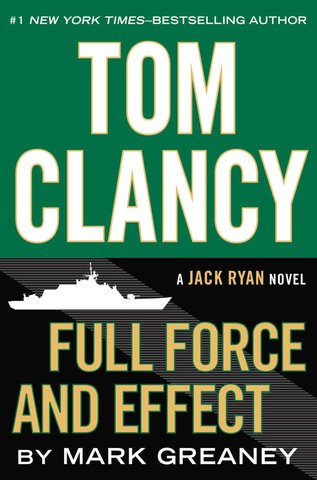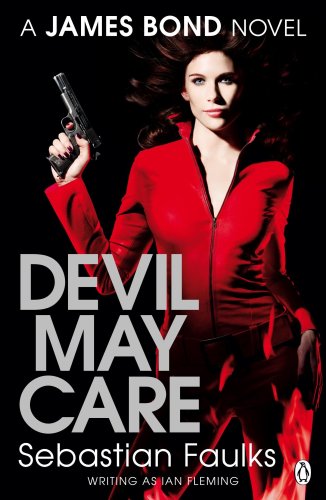Ghost Directors in the Auteur Machine David Church / Indiana University

Sure, we can readily understand allusions like “Hitchcockian” or “Kubrickian” when they appear in critical appraisals of work by different filmmakers, much as we know that “Alan Smithee” is a pseudonym for a director who has otherwise abandoned or disowned a given film. And we can appreciate when film preservationists attempt (often with mixed results) to retrospectively restore a famed filmmaker’s authorial vision in cases of mutilated or aborted films—such as the many stabs at reassembling Orson Welles’s oeuvre. For an analogue in the literary world, these latter cases most closely resemble the fragments posthumously completed by ghostwriters (who are sometimes the original author’s friends, family, or estate executors)—which, for similar reasons, tend to earn wildly differing critical assessments, depending on apparent fidelity to the creator’s original vision. Likewise, there are plenty of instances where Hollywood has not touched the literary prequels and sequels (some authorized, others not) to novels whose filmic adaptations were enormously successful (e.g., Gone with the Wind [1939],Casablanca [1942])—perhaps to avoid potential backlash from critics and fans, but also to avoid muddying the waters over which works would add to a given film’s franchise potential without straying too far from what is already considered “canon.”2
But imagine the cinematic equivalent of authors like James Patterson, Tom Clancy, Robert Ludlum, or V. C. Andrews—all of whom have developed bestselling literary franchises based more upon the author’s name as a popular brand (the use of possessives like “Tom Clancy’s…” on books, video games, etc. is apropos here), while largely relying on ghostwriters who mimic their writing styles or are merely billed (in very small print) as co-authors. (In Hollywood, the closest analogue might be publicity materials that lack the original director’s name but attempt to cash in on a recent hit with vague and disingenuous taglines like “From the producer/creator of….”) Most of these authors, it must be admitted, specialize in that culturally denigrated brand of mass-market fiction sometimes dismissively referred to as the “airplane book”—cheap, undemanding novels, with very short chapters and even smaller literary pretensions, often featuring a recurring hero(ine) in a formulaic thriller or procedural plot. With their populist appeal and recurring protagonists (often a spy, detective, or military figure navigating a world of international intrigue) across a series of books, it is no surprise that ghostwriters have been employed to produce so much of this material, considered disposable reads for killing time and little else.

An obvious precursor of this tradition would be the James Bond series, one of cinema’s longest-lived franchises, with five decades of movies based on Ian Fleming’s popular character. Fleming himself died in 1964, only a few years into the film series, and the author-function associated with the subsequent films has instead tended to focus upon the actors playing Bond over the years, especially since the films have tended to boast respected but not “brand-name” directors.3 Although only a handful of the Bond films were based on Fleming’s novels and short stories, Fleming’s estate has meanwhile continued to commission “official” Bond novels in the decades since his death. Yet, while some of the subsequent Bond novelists (such as John Gardner and Raymond Benson) were also commissioned to write novelizations of the later, non-Fleming Bond films, none of their own original continuation novels have (to date) been adapted into Bond films. In a sense, then, the Bond film franchise seems to hold these post-Fleming continuation novels as not canonical enough to adapt for the screen, even as several of the subsequent authors have gone so far as to emulate Fleming’s writing style. Sebastian Faulks’s 2008 Bond novel Devil May Care, for example, is billed as “Sebastian Faulks writing as Ian Fleming” and picks up where Fleming’s final novel, The Man with the Golden Gun (1965; adapted into a 1974 film), leaves off.

Precedents already exist in the world of art cinema, of course, since less commercially motivated endeavors have allowed more space for filmmakers to creatively indulge the anxiety of influence. Think, for instance, of Todd Haynes practically directing Far from Heaven (2002) “as Douglas Sirk,” but also as a means of critically engaging Sirk’s All That Heaven Allows (1955). Or imagine the various stylistic aspirants (e.g., David Gordon Green, Andrew Dominick, David Lowery, Shane Carruth, Josephine Decker) who could have made films “directed as Terrence Malick” during Malick’s long years in the wilderness between early films or during his apparent lapse into self-parody in recent years.5
Perhaps the fact that flesh-and-blood directors are expected to appear in person on press junkets, electronic press kits, and DVD bonus features would preclude the type of ghostwritten brand-name fiction that has been so commercially viable in the mainstream publishing world. And yet, as the New York Times reports, “Since 2006, one out of every 17 novels bought in the United States was written” under James Patterson’s name.6 With the major Hollywood studios increasingly shifting toward a smaller annual slate of big-budget franchise films, Patterson’s books may not unequivocally succeed in making the jump to the big screen, but his self-branding strategy would nevertheless seem financially enviable for another industry devoted to mass-market fictions.
If commercial bookshelves in 2015 remain lined with the likes of Patterson or even posthumous authors-as-brands like Tom Clancy, just imagine the contemporary multiplex where the latest comic-book adaptations might vie with new films directed “as Nicholas Ray,” “as Stanley Kubrick,” “as David Lynch,” or as whichever Hollywood (or Hollywood-adjacent) auteur seems most fitting for a given project or market moment. The ranks of any film school show us that there is no shortage of pretenders to the throne, while a younger generation of film critics seeks a wider and more obscure range of “vulgar auteurs” over the over analyzed canon of Big Names. But what if our current cinematic landscape resembled an alternate history where once-vital directors did not end their careers making inferior or misunderstood works (or worse, having to seek paychecks in academia), where long-dead filmmakers could bring their sensibility to a new generation of material, where that really interesting filmmaker finally got the chance (for better or worse) to “go Hollywood”?7 As sacrilegious as some would surely find it to throw the flesh-and-blood director’s biography out the window, the ghost-directed auteur film would not only confirm the old post-structuralist saw (à la Barthes and Foucault) that the author is merely an effect of discourse, but could also, despite its symptom of blatantly commercial interests, paradoxically revitalize a creatively moribund industry.
Image Credits:
1. Ghostwriters
2. Full Force and Effect
3. Devil May Care
Please feel free to comment.
- See Timothy Corrigan, “The Commerce of Auteurism: A Voice Without Authority,” New German Critique, no. 49 (1990): 43-57. [↩]
- This is not to say, though, that transmedia adaptations of these popular films have not occurred, as Barbara Klinger demonstrates with the case of Casablanca, in “Pre-Cult: Casablanca, Radio Adaptation, and Transmedia in the 1940s,” New Review of Film and Television Studies 13, no. 1 (2015): 45-62. [↩]
- For several years, Quentin Tarantino was rumored to be interested in directing a Bond film, though the implication that the film would likely become another of his trademark exercises for dissertation writing in retro excess is a good example of how the critical expectations attending the work of a highly marketable auteur could quickly distract from the series’s more franchisable features (especially its heavy reliance on contemporary product placement). [↩]
- David Edelstein, “A Really Close Encounter,” New York Magazine, June 5, 2011, http://nymag.com/movies/reviews/super-8-edelstein-review-2011-6/. He continues, “Abrams has probably been fighting not to reproduce Spielberg’s signature moves since the day he picked up a camera. Now, with the blessing of the master, he can plagiarize with alacrity.” [↩]
- See Nick Schager, “Hands Brushing Against Wheat, or the Many Imitators of Terrence Malick,” Vulture, April 24, 2013, http://www.vulture.com/2013/04/imitation-of-style-the-terrence-malick-effect-to-the-wonder.html. [↩]
- Jonathan Mahler, “James Patterson Inc.,” New York Times, January 20, 2010, http://www.nytimes.com/2010/01/24/magazine/24patterson-t.html. [↩]
- For a sustained discussion of such speculative questions, see Jeffrey Sconce, “Movies: A Century of Failure,” in Sleaze Artists: Cinema at the Margins of Taste, Style, and Politics, ed. Jeffrey Sconce (Durham, NC: Duke University Press, 2007), 273-309. [↩]
Pingback: The Most Popular How Do You Start an Essay
The thing is that the auteur theory started off as the politique des auteurs. Nowadays everyone who is in command of a camera team is called an auteur. Even Paul WS Anderson is called a (vulgar) auteur because he makes crappy movies all the time.